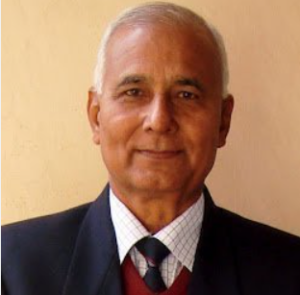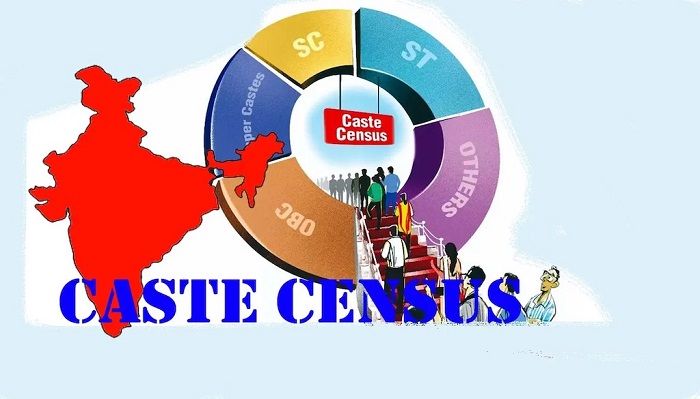SR Darapuri, National President, All India Peoples Front

(Asian independent) The Indian government’s decision to include caste enumeration in the upcoming national census, approved on April 30, 2025, by the Cabinet Committee on Political Affairs, marks a significant policy shift. This will be the first time since 1931 that a comprehensive caste-based census was conducted in independent India, moving away from the practice of only enumerating Scheduled Castes (SCs) and Scheduled Tribes (STs) since 1951. Below, I explain the purpose behind this initiative and its potential impacts, drawing on available information and critical analysis.
Purpose of the Caste-Based Census
The idea behind conducting a caste-based census stems from social, administrative, and political objectives aimed at addressing persistent inequalities in Indian society. The key purposes include:
- Accurate Data for Policy-Making:
* A caste census aims to provide precise demographic and socio-economic data on various caste groups, particularly Other Backward Classes (OBCs), whose population has not been officially enumerated since 1931. The Mandal Commission (1980) estimated OBCs at 52% of the population, but this figure is outdated. Updated data will help tailor welfare programs, reservations, and resource allocation to address disparities in education, employment, and access to resources.
* It aligns with constitutional mandates, such as Article 340, which calls for investigating the conditions of socially and educationally backward classes to recommend upliftment measures.
- Strengthening Affirmative Action:
* Reservations in education and government jobs for SCs, STs, and OBCs are based on historical data (e.g., 1931 Census for OBCs). A new census will provide current data to evaluate and reform these policies, ensuring fair representation for marginalized groups. For instance, the Justice Rohini Commission (2017–2023) highlighted the need for sub-categorization within OBCs to ensure equitable distribution of reservation benefits, which requires accurate caste data.
- Addressing Socio-Economic Inequalities:
* Caste remains a significant determinant of socio-economic deprivation in India. Data from Bihar’s 2023 caste survey showed that OBCs and Extremely Backward Classes (EBCs) constitute 63% of the state’s population, with many groups like Musahars and Bhuiyas facing exclusion from opportunities. A national census could uncover similar disparities, enabling targeted interventions to improve access to education, healthcare, and employment.
- Social Justice and Inclusive Development:
* Proponents argue that caste data will promote social justice by identifying historically disadvantaged groups and ensuring equitable resource distribution. Activists emphasize that caste-based structural inequalities intersect with region, religion, and economic status, necessitating detailed data for inclusive policies.
- Political and Electoral Strategy:
* The decision responds to growing political demands from opposition parties (e.g., Congress, Samajwadi Party) and regional leaders like Nitish Kumar, who have pushed for a caste census to align policies with caste realities. The opposition sees it as a tool to mobilize backward classes and counter the ruling Bharatiya Janata Party’s (BJP) Hindu unity narrative, making it a significant electoral issue.
Potential Fallout of the Caste-Based Census
While the caste census is intended to address inequalities, it is a contentious issue with potential social, political, and administrative consequences. The fallout can be categorized as follows:
Positive Impacts
- Data-Driven Governance:
* Comprehensive caste data will enable evidence-based policymaking, replacing estimates (e.g., Mandal’s 52% OBC figure) with accurate numbers. This could lead to better-targeted welfare schemes, improved representation, and periodic revision of reservation lists, as mandated by the Supreme Court’s Indra Sawhney judgment (1992).
* It could debunk myths about caste populations (e.g., exaggerated claims about certain castes’ numerical strength, like Lingayats in Karnataka), fostering objective policy debates.
- Empowerment of Marginalized Groups:
* By identifying disadvantaged castes, the census could strengthen affirmative action, ensuring that benefits reach the most deprived, such as EBCs within OBCs. Bihar’s 2023 survey, for instance, prompted demands for proportional reservations, highlighting its potential to empower marginalized communities.
- Social Awareness and Reflection:
* A caste census could spark a national conversation about caste’s role in perpetuating inequality, challenging upper-caste notions of a “casteless” society, and encouraging collective reflection on social justice.
Negative Impacts
- Reinforcement of Caste Identities:
* Critics argue that enumerating castes could entrench caste divisions, countering efforts to create a casteless society as envisioned by leaders like B.R. Ambedkar. Urban youth, increasingly detached from caste identities, may be forced to identify with a caste, potentially reversing progress toward social cohesion.
* The census could harden caste-based loyalties, especially in rural areas, where recent elections show caste identities prevailing over development issues.
- Political Polarization:
* The census is likely to intensify identity politics, with parties leveraging caste data to mobilize voters. Opposition parties, like the INDIA alliance, aim to use it to weaken the BJP’s Hindu unity (Hindutva) agenda by emphasizing caste-based grievances. This could lead to a revival of Mandal-style politics, polarizing voters along caste lines.
* Upper-caste groups may oppose the census, fearing reduced influence if reservations are expanded, while dominant OBC castes may resist sub-categorization that benefits smaller, more deprived castes.
- Administrative and Logistical Challenges:
* Enumerating castes is complex due to India’s thousands of castes, sub-castes, and regional variations. The Socio-Economic and Caste Census (SECC) 2011, which reported an implausible 46 lakh castes, failed due to poor design and open-ended questions, highlighting the difficulty of accurate classification.
* Respondents may misreport castes for perceived benefits (upward or downward mobility claims), complicating data reliability. The 1931 Census noted similar issues, with communities shifting identities for prestige or benefits.
- Social Tensions and Legal Challenges:
* The census could trigger demands for higher reservations, potentially breaching the Supreme Court’s 50% reservation cap, leading to legal battles. Groups like Marathas, Patidars, and Jats have previously sought reservations, and new data could fuel similar claims, risking social unrest.
* The central government’s exclusive authority over censuses (under the Census Act, 1948) has led to legal disputes, as seen in Bihar’s 2023 survey, which was challenged for violating privacy and overstepping state powers. Similar challenges may arise nationally.
- Risk of Misuse:
* Caste data could be manipulated for electoral gains, with parties using it to stoke divisions rather than promote justice. State-level surveys, like Bihar’s, have been criticized for lacking transparency, raising concerns about the national census’s credibility if not conducted rigorously.
Critical Analysis
The caste census is a double-edged sword. On one hand, it addresses a critical need for data to tackle entrenched inequalities, as caste continues to shape access to opportunities (e.g., Dalits face discrimination in jobs and housing despite qualifications). Without updated data, policies risk being misdirected, perpetuating historical injustices. On the other hand, the exercise risks deepening social divisions in a country already grappling with caste-based politics and violence. The BJP’s initial reluctance (e.g., Nityanand Rai’s 2021 statement against caste enumeration) reflects fears of a “Mandal II” scenario, where regional parties gain leverage by mobilizing OBCs. The decision to proceed, possibly influenced by allies like Nitish Kumar, suggests a pragmatic response to political pressures but also a gamble on managing the fallout.
The success of the census depends on its execution. The SECC-2011’s failure underscores the need for a robust methodology, clear questionnaires, and trained enumerators to avoid errors. Transparency and public trust are crucial to prevent accusations of political bias, as seen in some state surveys. Moreover, the government must balance the census’s findings with efforts to promote social cohesion, perhaps by encouraging “no caste” options in official forms, as suggested by some critics.
Conclusion
The caste-based census is driven by the need to address socio-economic disparities, strengthen affirmative action, and fulfill constitutional mandates for social justice. It promises data-driven governance and empowerment of marginalized groups but risks reinforcing caste identities, fueling political polarization, and sparking social tensions. Its success hinges on meticulous planning, transparency, and a commitment to using data for inclusive development rather than divisive politics. While it could reshape India’s approach to inequality, it also challenges the vision of a casteless society, making it a pivotal moment in the country’s social and political evolution.
Courtesy: Grok








